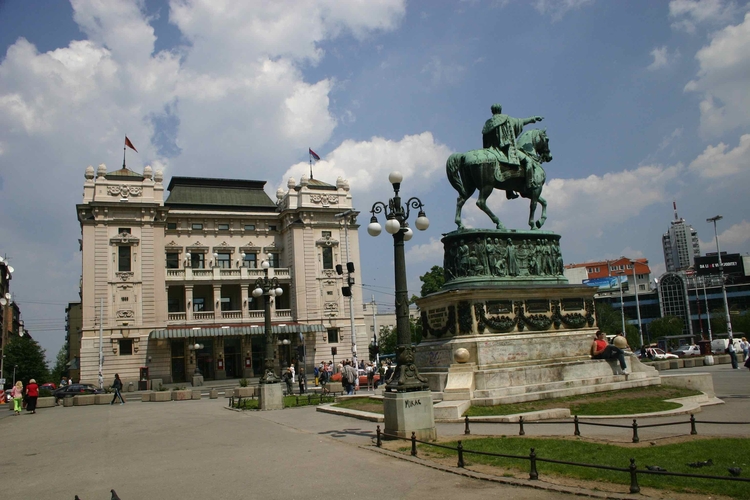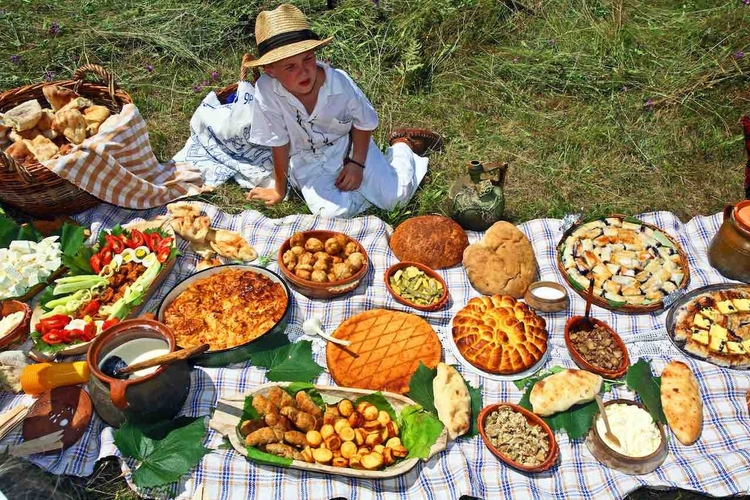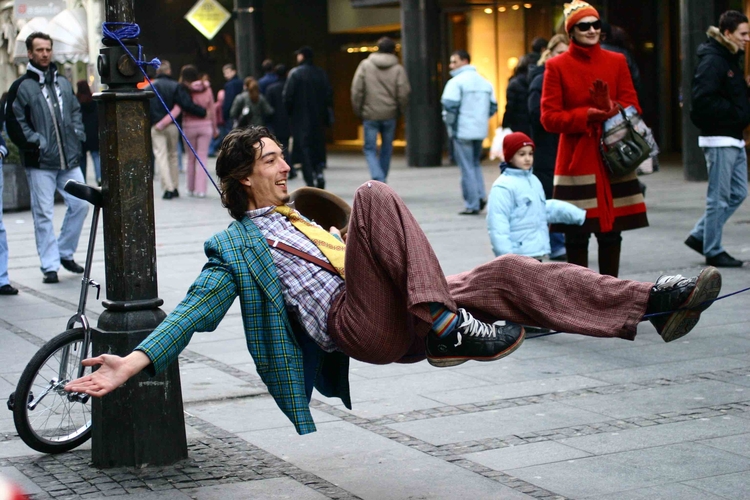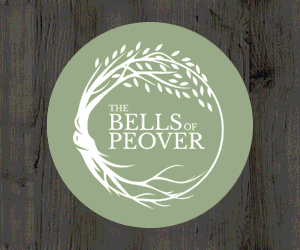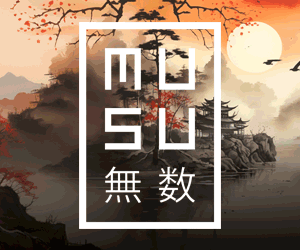Gill Martin is fascinated by the edgy Serbian capital
THE genteel ladies of Belgrade were not amused. In fact, they were scandalised when a very large and imposing bronze statue of The Victor, was erected in all his naked glory. They averted their eyes from Victor’s six pack and rippling muscles as he stood, 46ft tall (14m), atop a column to rival Nelson’s, brandishing his sword and, let’s face it, showing off his manhood.
Revellers find a restless, edgy city where young and not so young throng the 3,000 restaurants, cafes and bars and where the clubbing scene is hot and loud and late.
The womenfolk preferred not to face it. So, to preserve outraged sensibilities, the city’s governors bowed to their pressure and re-sited Victor to the Belgrade Fort overlooking the River Danube and Sava Rivers to commemorate Serbia’s victory over the Ottoman and Austro-Hungarian Empire during the Balkan and First World Wars. And here he’s stayed, since 1928, a striking emblem of Balkan power and warning to potential invaders.

We witnessed that power as a deafening fly past of war planes and helicopters swooped over Victor in formation of threes, screaming engines vibrating the very ground where we stood.
They were celebrating Ministry of Defence Day. We happily toasted the pilots and their flying machines, clinking our glasses of rakia – a powerful fruit brandy guaranteed to put hairs on your chest – and yelling ‘ziveli’ or cheers.
Rejoicing in its reputation as one of the world’s wildest party destinations, the Serbian capital certainly has its fair share of boozy hen and stag parties. Air Serbia sets the mood by serving free alcohol, even in economy.

Boozy, buzzing Belgrade is liberal and laid-back, with a relaxed gay scene and as bustling and modern as any European city. Revellers find a restless, edgy city where young and not so young throng the 3,000 restaurants, cafes and bars and where the clubbing scene is hot and loud and late.
It still bears a few scars of the vicious Balkan conflict when NATO bombarded targets against the regime of Slobodan Milosevic in 1990. Our guide, Srdjan Petrovic, recalled: “I was 12 years old, visiting my friend’s granny, when we saw aircraft coming over our heads and the bombing.” But to the young that is ancient history. They are more likely to be looking forward to joining the EU – and voice puzzlement at Britain’s Brexit.
Belgrade, like the rest of Serbia, welcomes international tourism to boost its economy. It is rich in history, hospitality, museums, galleries and architecture where brutal Communist-era concrete eyesores vie with art nouveau and royal palaces. By appointment you can visit the palace of Crown Prince Alexander II, a godson of our Queen Elizabeth. And we did.
He was born in the posh London hotel of Claridges 73 years ago and speaks better English than Serbian. In fact, he’s still taking lessons. A recent poll suggested almost a quarter of Serbians fancy restoring the monarchy.
Meanwhile, the government allows him and his wife to reside rent-free in a splendid palace where the couple are happy to pose for selfie-stick wielding tourists. Sadly he was overseas when we visited but his presence was evident. A discarded dish of popcorn and water bowls for the dogs lay between plush velvet seats of his private cinema.
Even more famous bottoms graced those velvety chairs: Tito, the former Communist President who led what was then Yugoslavia, was a movie fanatic. He famously hosted Liz Taylor and Richard Burton in his comfy cinema.
His memorial tomb stands beside his wife’s. His mistress’s grave is in landscaped gardens, which provide peaceful respite from the fast pace of a city cruelly described by Le Corbusier, pioneer of modern architecture, as “the ugliest city in the world but in the most beautiful place.”

Just a stroll away is the Hyde Park restaurant – a mix of kitsch and Cath Kidston – where we feasted on karadordeva snicia, rather like a chicken kiev, but with veal or pork and served with lashings of kajmak, a salty yoghurty cottage cheese that garnishes everything from bread to burgers.
Serbia is carnivore paradise: heaps of sausages, grilled meats, goulash and kebabs. Vegetarians and vegans can just about survive by insisting on posna hrana or meatless food. And don’t worry if you’re lost for unpronounceable Serbian words as most menus offer an English translation.
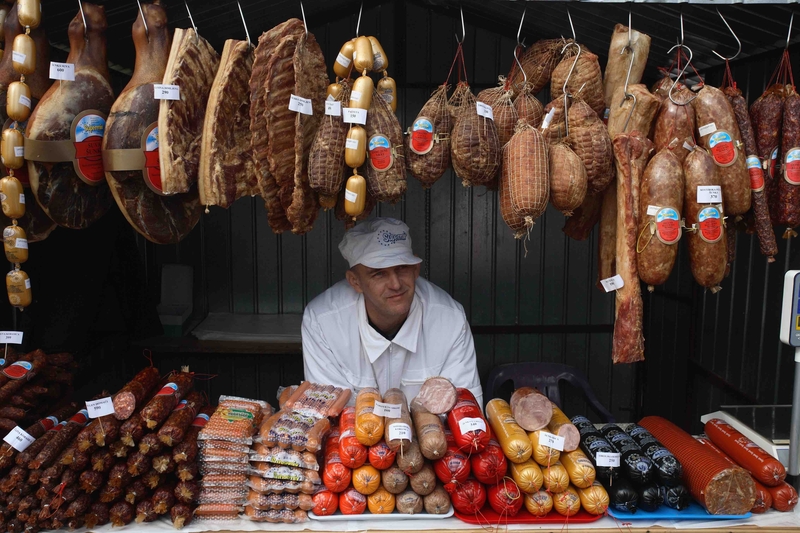
No meal, it seems, is complete without that glass of rakia, flavoured with plum, apricot, quince, apple or raspberry. At up to 60 per cent proof the fruity flavours are secondary to the overwhelming burning sensation as the liquor hits your throat. Sadly it doesn’t count as one of your five a day.
But undoubtedly good for our health was heavenly honey sampled at an apiary founded 150 years ago by Prof. Jovan Zivanovic, guru of modern bee-keeping. The 26-year-old father of three suffered from TB, so moved to the fresh air of the countryside at Sremski Karlovci, almost at the end of our 90km drive from Belgrade to Novi Sad.
He became a bee keeper, had a dozen more children and attributed his virile long life to his honey. I bought three jars from what is now a museum, where his family carries on the beekeeping tradition and also makes fine wines.

Other notable Serbian exports are plums, raspberries and tennis star Novak Djokovic. Least successful: the Jugo car. Manufacturers unveiled a ‘new’ model every year, boasting deeper ashtrays, brighter lights or, so the joke went, a heated rear screen to warm the hands of those who had to push start it. I resisted a 500€ 1998 Jugo jalopy for sale in Novi Sad.
Serbia’s second city is 2019 European Youth Capital and in 2021 will become the first non-EU country – Serbia is desperate to get into the Union that Britain is exiting – named European Capital of Culture.
And talking of exit, the annual EXIT Festival is the jewel in Novi Sad’s youth culture crown. It exploded into life in 2000, a focus of the young’s hatred of the Milosevic regime, and lasted an insane 100 days. It has been going strong ever since, attracting 200,000 revellers each July.
Pop, rock and fireworks on the 18thcentury Petrovaradin Fortress Exit has featured Sex Pistols, Lily Allen and Arctic Monkeys, while this year The Cure are on the bill. I’m booking my tickets.
Fact file
For further information about Serbia, please visit the National Tourism Organisation of Serbia’s website. For making travel plans visitRegent Holidays and Travel The Unknown.
Getting there: Air Serbia flies nine times a week from Heathrow to Belgrade, Wizz Air from Lu ton three times a week and all major European carriers connect to the city.




